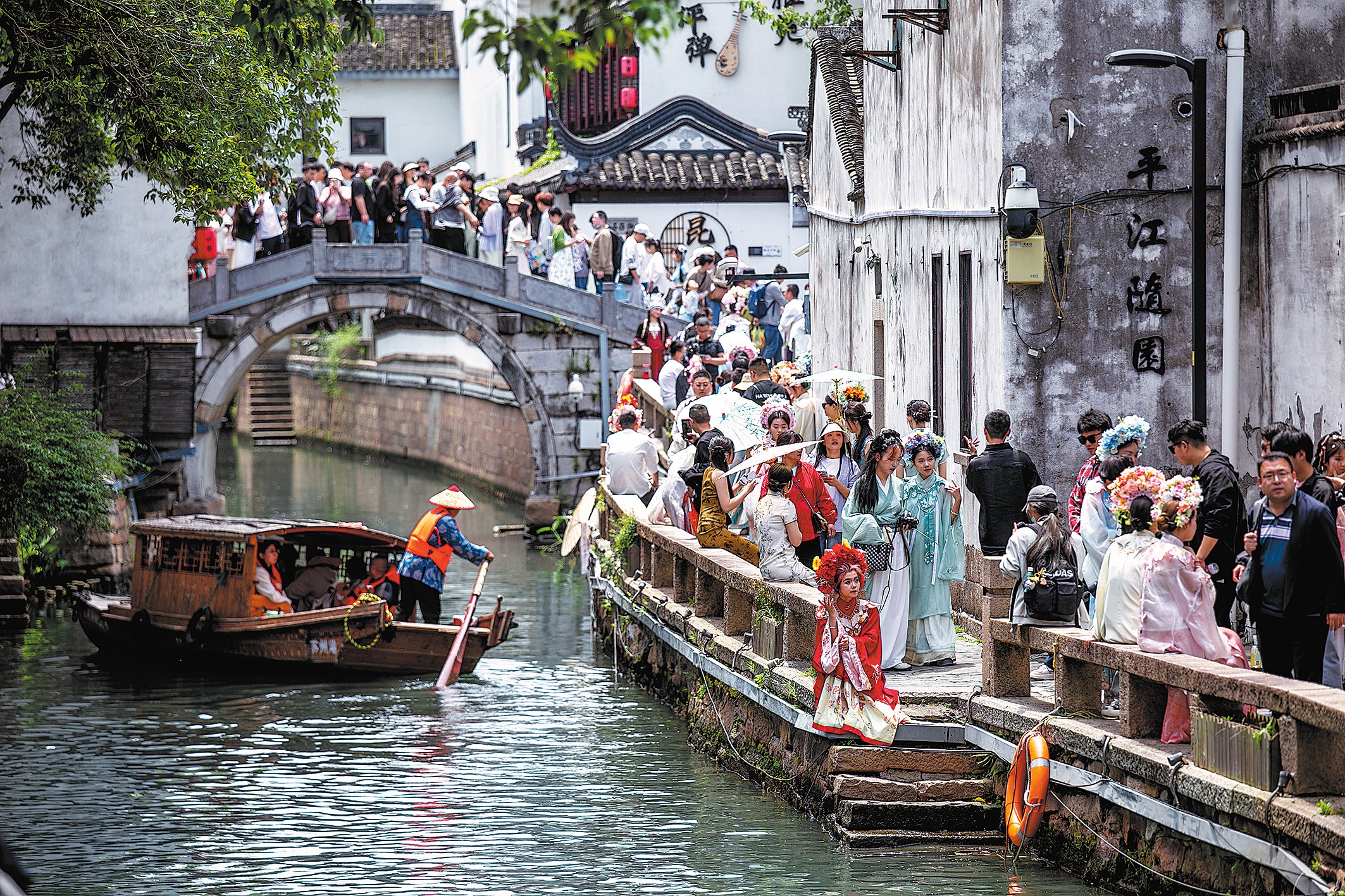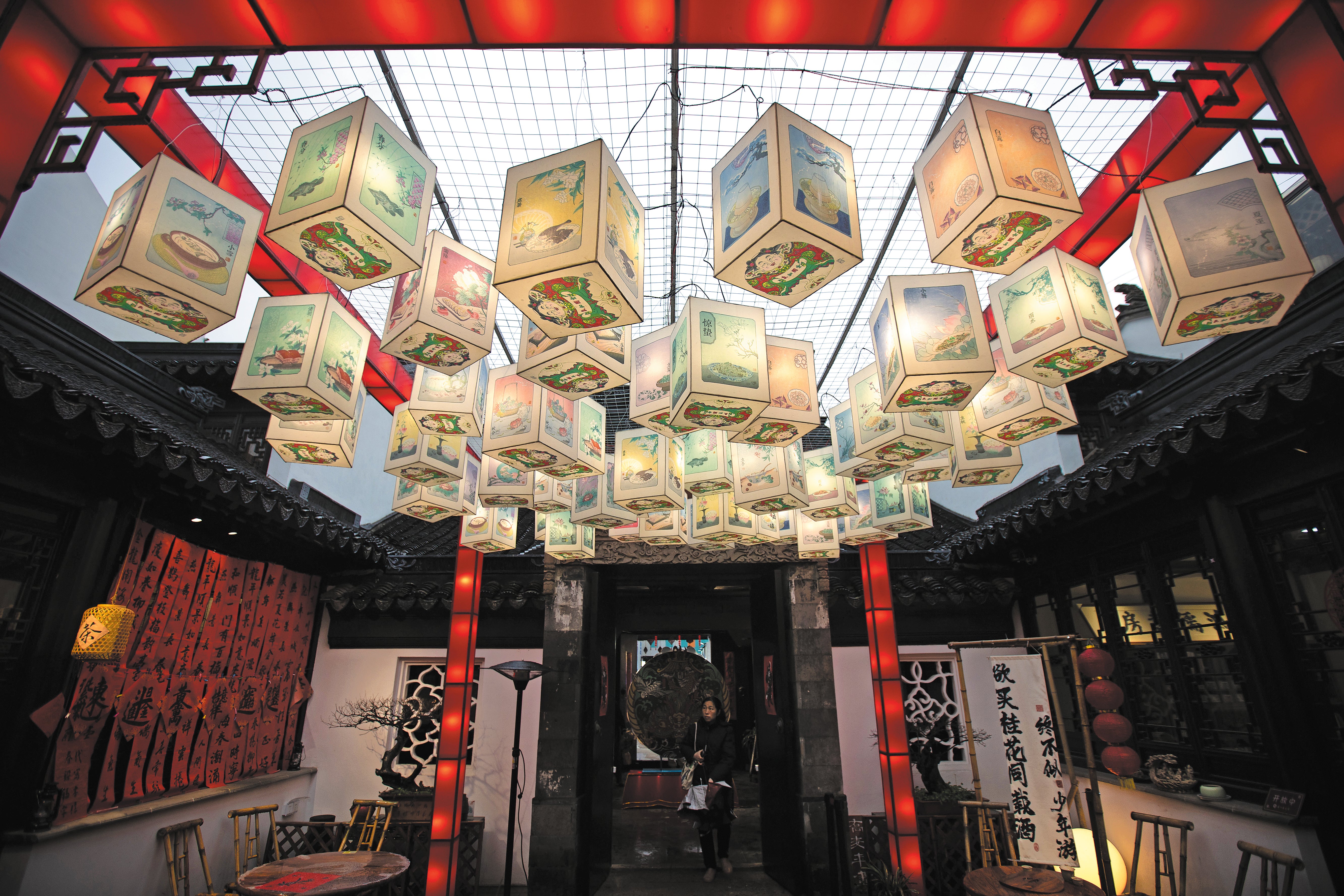Bridging the gap between now and then
THE ARTICLES ON THESE PAGES ARE PRODUCED BY CHINA DAILY, WHICH TAKES SOLE RESPONSIBILITY FOR THE CONTENTS

“When you arrive in Suzhou you’ll see homes nestled by the river’s edge,” Du Xunhe, a poet in the latter half of the ninth century, during the Tang Dynasty (618-907), wrote to a friend. “The idle land is as scant as the waterways and bridges are abundant.”
Ruan Yongsan, a lifelong Suzhou resident who has spent the past 55 years trying to preserve the land’s memories — and his own as well — gets the drift.
“Canals and bridges have visually defined the city for as long as Chinese poetry can remember,” he said.
Occasionally he takes people on tours that often start at the southernmost point of the Pingjiang River in the northeastern part of the Old Town of Suzhou, located in the heart of the city.
There, a small bridge named the Yuanqiao Bridge — yuan means garden and qiao means bridge — is fabled for being where Helyu, king of the vassal state of Wu during the Spring and Autumn Period (770-476 BC), once lounged, presumably one agreeable spring day. In the fifth century BC, the ambitious ruler built a grand city in what is now Suzhou, a watery land in the rice-producing Yangtze River Delta region.
A few steps away from the bridge, under a small, pagoda-shaped structure, stands a stone stele with a map inscription bearing the name Pingjiang Tu (The Map of Pingjiang).
“The map was first made in 1229 during the Song Dynasty (960-1279), when Suzhou was known as Pingjiang,” Ruan said. “The area it covered essentially corresponds with that of our Old Town.”
Of the 360 or so bridges the map depicts, a dozen still straddle the 1 mile-long Pingjiang River, which is clearly shown, although not specifically named on the map.

The river, and Pingjiang Road that runs alongside it, form the core of Pingjiang Historic District, a 287-acre zone that is essentially, as Ruan puts it, “an authentic, boiled-down version of what Suzhou has been throughout history”.
Among other things, the 78-year-old surveyor-turned-preservationist is referring to what he calls “the double-chessboard layout” of the Old Town, which first appeared during the Tang Dynasty around the ninth century.
“Despite the region’s abundance of water, all the waterways you see inside the Old Town are artificial passages — canals built as straight as a ruler to a chessboard effect, with the ones running north-south intersecting with those running east-west. Upon this densely woven water network a road grid was overlaid so that the road traffic and the water traffic always move hand in hand.”
These days those taking a boat along the Pingjiang River still look up to their pedestrian counterparts strolling alongside them on the stone-paved Pingjiang Road, the latter sandwiched between the waterway and a row of black-tiled, white-painted houses, most of which date back to the late 19th and early 20th centuries.
In 2014 a museum dedicated to their memory opened in Niujia Lane, one of the small alleys extending westward from Pingjiang Road, less than 330 feet from a two-storey building in which Ruan was born in 1946.
For Ruan Yisan, an elder brother of Ruan Yongsan and one of China’s leading preservationists, the waterways are time tunnels leading to much-cherished childhood memories, when his family was living on Niujia Lane.
Ruan Yisan first became involved in the planning for the Pingjiang Historic District as far back as the late 1980s. Later, in the early 2000s, when work on the project was expedited, Ruan Yisan, who taught urban planning at Shanghai’s Tongji University, started to spend more and more time in Suzhou.
“As an underwriter of the project, my brother makes sure that it’s an ongoing process. What he has been trying to do consistently is to retain the area’s many layers of history, without turning it into a showpiece trapped in a time capsule,” said Ruan Yongsan.
“Around 20,000 people are today living inside the historical district, of whom 60 per cent are longstanding residents,” said Ruan Yongsan.
